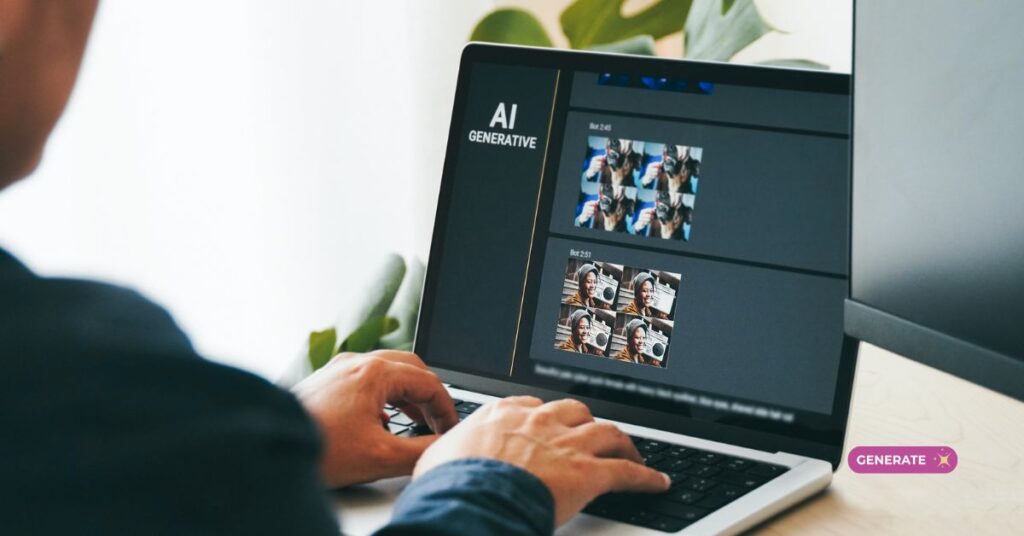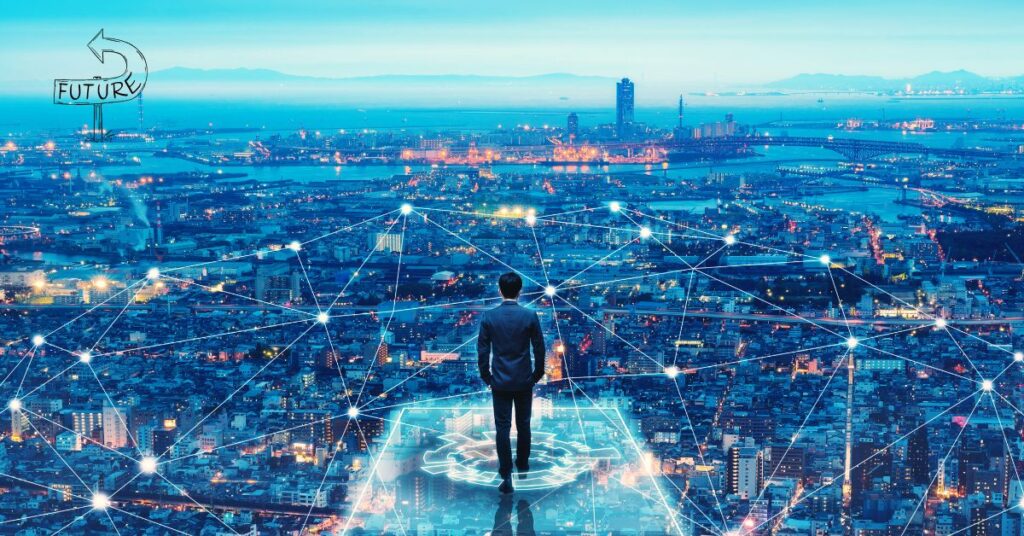In 2025, generative artificial intelligence (AI) has transitioned from a niche technological advancement to a mainstream tool revolutionizing various industries. From content creation to scientific research, generative AI is reshaping how we work, create, and interact with technology. This article delves into the advancements in generative AI, its impact on content creation, ethical considerations, and the future prospects of this transformative technology.
Advancements in Generative AI
Generative AI has witnessed explosive growth and evolution in recent years. As we move through 2025, these advancements are not just theoretical—they’re transforming how businesses operate, how creators innovate, and how end users interact with digital content. Below are the major technological developments that define the current generative AI landscape:
Emergence of Multimodal Models
One of the most transformative breakthroughs in 2025 is the rise of multimodal AI models—systems capable of understanding and generating more than just text. These models can interpret and produce images, video, audio, and text in combination, unlocking previously unthinkable possibilities.
For instance:
Google’s Veo 3 allows users to input a few lines of text and generate ultra-realistic videos with matching voiceovers and background sound effects. These models can understand scene descriptions, emotion tones, and even camera angles.
OpenAI’s Sora and Meta’s CM3leon are other examples that blend vision and language models to produce AI-generated video content from text or image prompts.
Manus by Monica is leading in creating AI-generated podcasts and voiceovers by understanding emotional tone and narrative structure.
These models are revolutionizing industries like film, marketing, gaming, and journalism by drastically reducing production time and cost.
Democratization of AI Tools
Generative AI is no longer confined to tech giants and data scientists. With the help of cloud computing, open-source communities, and low-code/no-code platforms, advanced AI models are now accessible to small businesses, educators, artists, and even students.
Platforms such as:
…have made it easy for non-technical users to generate creative assets, automate workflows, and test AI models with minimal technical know-how.
This democratization of tools is fostering a grassroots innovation movement, encouraging startups and independent creators to push boundaries in art, media, education, and entrepreneurship.
Integration into Everyday Applications
Generative AI is rapidly being embedded into everyday tools and services, often in ways users don’t even notice. This integration boosts productivity, personalizes experiences, and enhances usability.
Examples include:
AI-generated email replies in Gmail or Outlook
Automatic slide and document creation in Microsoft 365 Copilot or Google Workspace
Smart shopping assistants that suggest outfits, meals, or products using generative models
AI customer service bots that provide human-like responses and resolve complex queries
The seamless integration of generative AI into mainstream platforms means users interact with powerful AI every day—whether composing a resume, searching for a recipe, or chatting with support.
Impact on Content Creation

Generative AI is transforming how content is imagined, produced, and distributed. The content economy—spanning writing, design, video production, music, and beyond—is being reshaped at its core. Let’s break down the major areas where this impact is most visible:
Revolutionizing Creative Industries
Traditional content creation, especially in creative fields like graphic design, video editing, and writing, used to require extensive training, time, and resources. Now, generative AI is leveling the playing field by:
Automating time-consuming tasks, such as background removal, color correction, or subtitle generation
Generating entire videos, blog posts, or illustrations with minimal input
Helping scriptwriters, novelists, and journalists brainstorm or co-write content
AI tools like Jasper.ai, Writesonic, Pika Labs, and ElevenLabs are now essential parts of creators’ toolkits.
According to market research, the global generative AI market in creative industries is projected to hit $21.6 billion by 2032, with a compound annual growth rate (CAGR) of 29.6% from 2023 to 2032. This explosive growth signals not just opportunity—but also disruption.
Enhancing Personalization
In 2025, audiences expect more than just good content—they want content tailored to their individual preferences, behaviors, and moods. Generative AI enables this hyper-personalization at scale:
E-commerce platforms use AI to generate personalized product descriptions and promotional emails.
News apps curate daily digests tailored to users’ political views, interests, and reading habits.
Streaming services generate personalized thumbnails and recommend AI-generated trailers based on watch history.
For content creators, this means being able to deliver one-to-one experiences at a one-to-many scale—a game-changer for engagement, retention, and monetization.
Ethical Implications in Content Generation
With great power comes great responsibility. As generative AI reshapes content creation, it also introduces serious ethical concerns that cannot be ignored:
Deepfakes and misinformation: AI-generated content can be indistinguishably realistic, leading to potential misuse in spreading false information or impersonating real people.
Copyright issues: Many AI models are trained on massive datasets, some of which include copyrighted content. The legality and fairness of using these outputs remain murky.
Bias and representation: AI models may replicate or amplify social biases present in their training data, affecting representation in generated content.
In response, organizations and governments are pushing for:
Watermarking AI-generated media
Clear labeling of synthetic content
Frameworks for ethical and transparent AI use
Some countries, like the EU and the U.S., are already implementing regulations to govern how generative AI content is labeled, stored, and distributed.
Read More :Top 10 Tech Gadgets Every Home Must Have in 2025
Ethical Considerations in Generative AI

As generative AI systems become more capable, their widespread deployment raises a complex array of ethical issues. While they open up remarkable opportunities, they also introduce challenges that developers, governments, and society at large must navigate responsibly.
Intellectual Property (IP) Challenges
One of the most pressing concerns in the AI space is the uncertainty around ownership and copyright of AI-generated works.
Generative models like GPT, Midjourney, and DALL·E are trained on vast datasets that often include copyrighted texts, images, or videos. As a result:
Outputs may resemble real copyrighted works, either in style, structure, or specific phrasing.
Creators of AI-generated content are unsure whether they legally “own” what the AI produces.
Original artists and authors argue that their work is being used without permission or compensation during training.
Governments and legal experts are currently working to redefine intellectual property laws to address this new reality. For example, the U.S. Copyright Office has stated that works created entirely by AI are not eligible for copyright—but what about works that are partially AI-assisted?
Potential solutions under discussion include:
Attribution requirements for AI-generated outputs
New licensing frameworks for training data
Shared royalties between AI developers and original data creators
This evolving debate will shape the future of creative ownership in the AI era.
Bias and Fairness
AI systems, including generative models, are only as good as the data they are trained on. Unfortunately, that data often contains inherent biases—racial, gender-based, cultural, or socio-economic.
Consequently, AI-generated content can:
- Reinforce harmful stereotypes
- Favor certain cultural narratives over others
- Exclude marginalized groups from representation
For example:
- An AI generating images for “CEO” may predominantly create pictures of older white men.
- A language model may associate certain ethnic groups with crime or poverty based on biased training data.
To mitigate these issues, developers must:
Diversify training datasets to reflect a broader range of perspectives
Conduct fairness audits on model outputs
Implement bias mitigation techniques, such as adversarial training or fairness constraints
Inclusive AI isn’t just an ethical imperative—it’s a strategic one. Fair and unbiased AI leads to better user trust, global adoption, and long-term sustainability.
Transparency and Accountability
As AI becomes more autonomous, transparency and accountability are crucial to maintaining public trust and safety.
Key concerns include:
Knowing when you’re interacting with AI: Should AI-generated content be labeled clearly?
Responsibility for harmful outputs: If an AI produces offensive or misleading content, who is liable—the user, the developer, or the platform?
Model explainability: Can users or regulators understand how decisions are made by complex models like GPT-4 or Google’s Gemini?
To address these challenges, governments and industry leaders are pushing for:
AI transparency standards, such as mandatory disclosure labels (e.g., “Generated by AI”)
Model documentation, like “model cards” that explain a model’s intended use and limitations
Ethical review boards within AI companies to assess high-risk applications
Frameworks like the EU AI Act and efforts by organizations such as the Partnership on AI are leading the way in proposing global norms for responsible AI development and deployment.
Read More : Top 10 Most Anticipated Video Games of 2025
Future Prospects of Generative AI

The future of generative AI extends far beyond content creation. It’s poised to reshape critical domains such as science, education, and policy-making. Let’s explore the areas where its potential is both promising and transformative.
AI in Scientific Research
Generative AI is revolutionizing the scientific method by accelerating discovery and reducing the time between hypothesis and breakthrough.
Applications include:
Molecular and protein structure prediction (e.g., DeepMind’s AlphaFold)
Drug discovery using models that simulate chemical reactions or generate molecular candidates
AI-assisted literature reviews, where large language models sift through thousands of papers to find relevant data
These tools are not replacing scientists, but amplifying human capabilities by automating repetitive tasks and proposing novel insights.
This leads to:
Faster vaccine development
Improved climate models
Smarter agricultural solutions
Scientific research powered by AI may lead to life-saving innovations, making it one of the most impactful frontiers in generative technology.
AI-Driven Education
Education is undergoing a digital transformation, with generative AI playing a central role in personalizing learning at scale.
Key uses include:
AI tutors that offer individualized explanations, quizzes, and feedback
Content generation for creating textbooks, assignments, and assessments tailored to each learner
Simulated environments for experiential learning (e.g., virtual science labs, historical re-enactments)
For example, platforms like Khan Academy’s Khanmigo and Duolingo Max integrate AI to deliver context-aware learning in real time.
The benefits of AI in education are enormous:
Increased access for underserved populations
Scalable support for teachers and administrators
Improved student engagement and retention
When developed ethically, generative AI can be a powerful equalizer, reducing educational inequality and enhancing lifelong learning.
Ethical AI Development: Global Collaboration and Governance
As the power of generative AI grows, so does the need for international cooperation to establish responsible and inclusive development practices.
One example is the India–France AI Summit, which emphasized:
Creating shared ethical standards for AI development
Promoting inclusive data sharing frameworks
Establishing cross-border AI research labs
Global initiatives are also underway through organizations like:
The OECD AI Policy Observatory
The United Nations AI for Good
The G7 and G20 AI task forces
The future of generative AI isn’t just technical—it’s diplomatic and regulatory. These collaborations aim to prevent the misuse of AI, ensure equitable access to its benefits, and foster innovation in a safe, fair ecosystem.
Conclusion
Generative AI in 2025 stands as a testament to human ingenuity, offering unprecedented opportunities across various sectors. While it brings about significant advancements, it also presents challenges that require careful consideration and responsible development. By addressing ethical concerns and fostering collaboration, we can harness the full potential of generative AI for the betterment of society.

